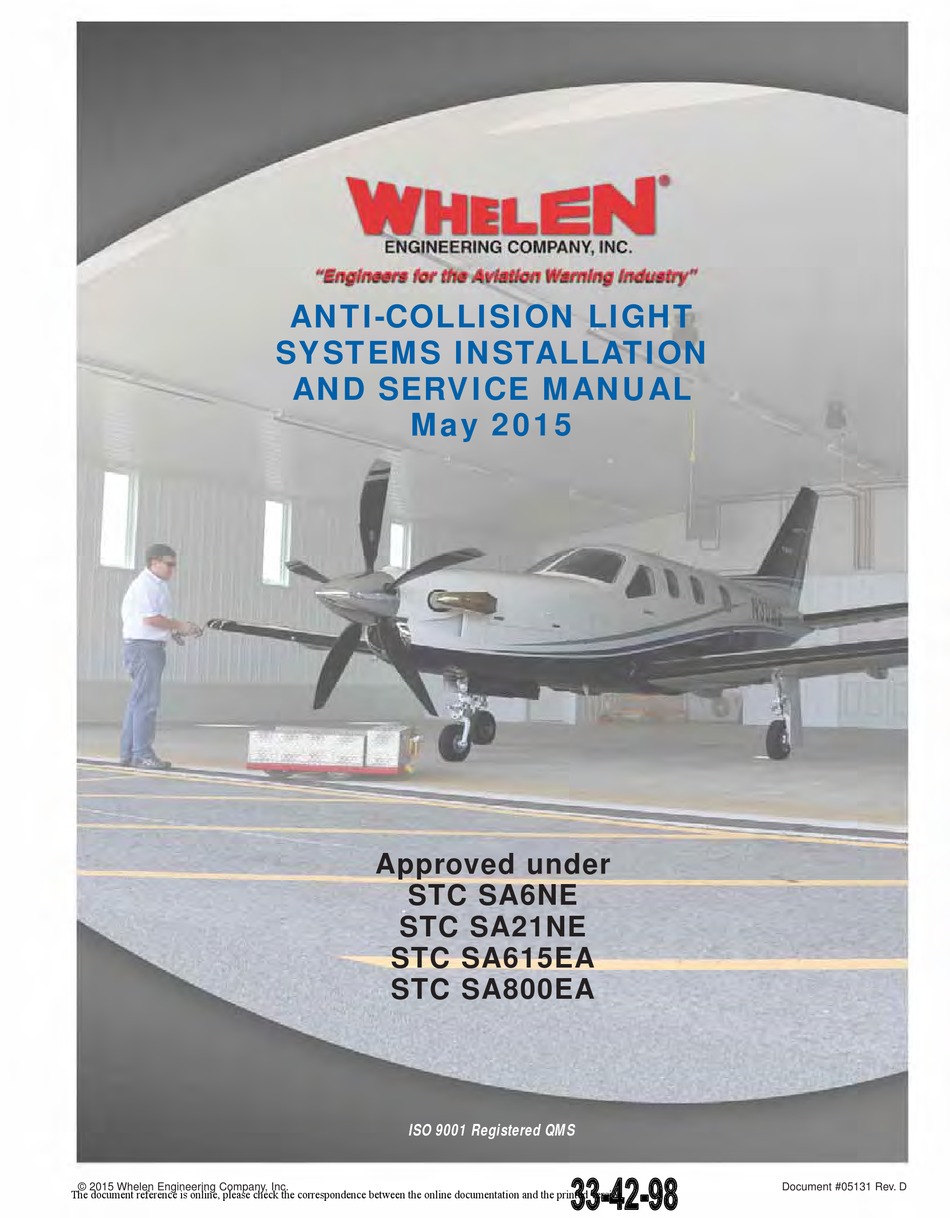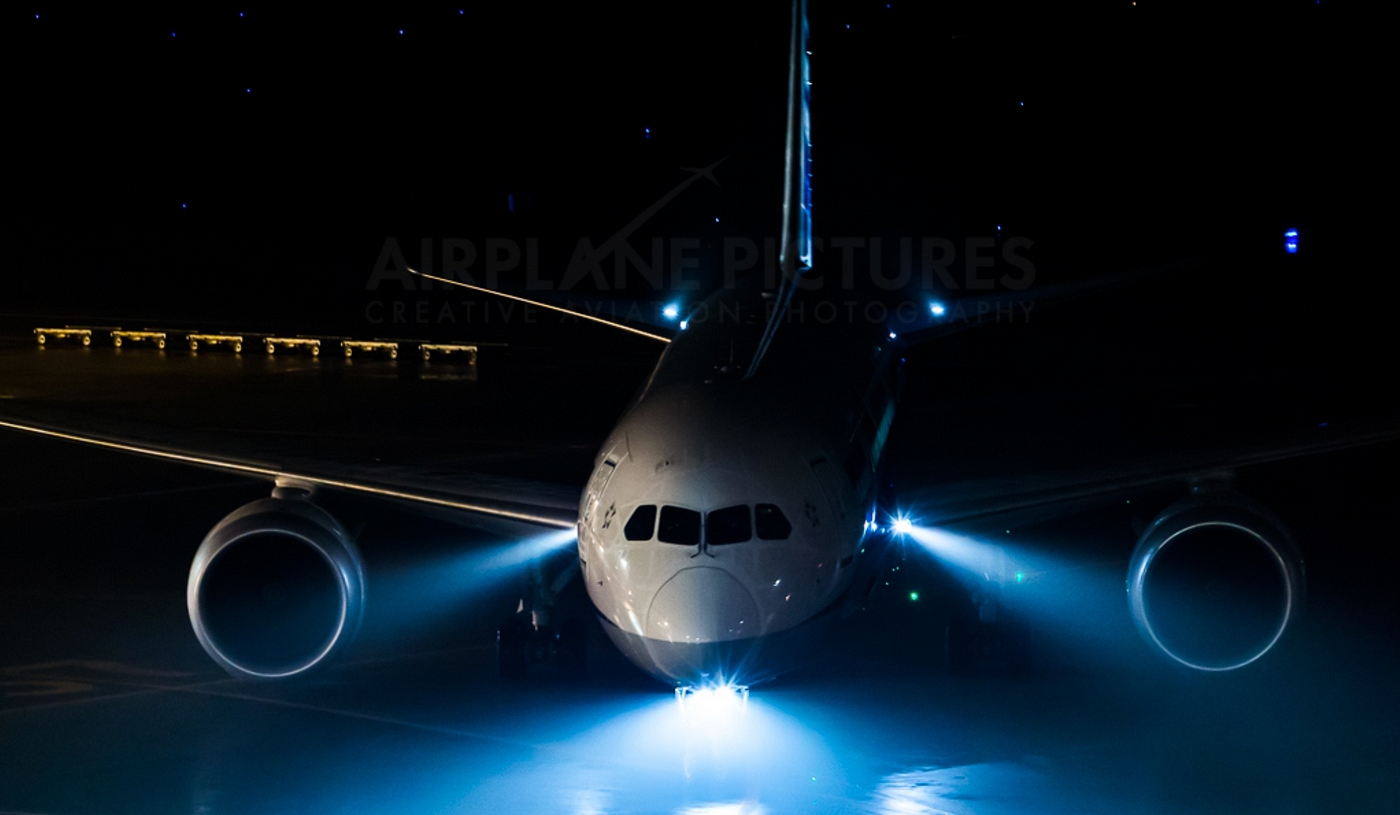Anti Collision Lights Aircraft - Anti-collision lights are used to increase the visibility of an aircraft to other aircraft in flight or to ground traffic while moving or standing at an airport. All aircraft must have an approved anti-collision lighting system that emits light 360° around the vertical axis of the aircraft and 75° above and below the horizontal plane of the aircraft. The lighting system consists of one or more torches and/or strobe lights.
An aircraft beacon is a red light that flashes or rotates to give a pulsating warning light. They are usually placed in pairs to achieve the required vertical coverage, with one on top of the fuselage and the other on the bottom. A strobe is a high-intensity white light usually mounted near the trailing edge of the wingtip, and may also be mounted on the trailing edge of the tail cone next to the navigation lights.
Anti Collision Lights Aircraft

The Global Lighting Forum (GLF) is the only professional community in the world dedicated to fostering communication and collaboration between people from across the lighting industry. The Open Lighting Product Directory (OLPD) is an online product showcase that provides a best-in-class infrastructure for the global lighting industry to generate B2B sales leads and increase brand value. We enter the world of lighting products and use the power of knowledge to stay at the forefront of product marketing. Every modern aircraft is equipped with a comprehensive external lighting system consisting of flashing and steady lights.
Download Flashing Anti Collision Lights Of Airplane Iphone Wallpaper
Flashing lights are designed to attract attention, while steady lights are mainly used for illumination.
Let's take a look at this Boeing 787 that just left the runway after a night landing:
This light is mounted on the horizontal stabilizer and illuminates the tail of the aircraft and its operator emblem - or acronym in this case. They make the presence of the aircraft known in the dark.
A prominent, illuminated vertical stabilizer with an airline logo is a good indicator that an airline is nearby.
Halogen Flashing Anti Collision Light 28v Red Lens
A taxi light, located at the front, illuminates the taxiway ahead, making it visible to the pilot.
After that, we have landing lights and runway turn lights, both located near the wing roots on the Dreamliner:
Landing lights are long lights that cast light over long distances, making long runways visible to pilots.

Unlike landing lights that shine straight ahead, runway turn lights are designed to illuminate runway exits, which are diagonal to the runway, allowing the pilot to see in the dark while steering the aircraft toward the exit.
Whelen Engineering Company Or5001v Installation And Service Manual Pdf Download
(Note that some other aircraft models, such as the Airbus A350, have runway lights located on the nose gear rather than on the wings.)
Now the plane is quite noticeable on the ground. However, it is still difficult to detect the wings and fuselage of the aircraft from a distance.
So we need a flashing light. These lights are known as "anti-collision lights" and flashing lights are easily visible to the eye from a distance.
These high-intensity, glare-free lights are the brightest lights on aircraft. It is located at each end of the wing and flashes at certain intervals.
Request] Logo Light Shall Be Off When Gear Up · Issue #1362 · Flybywiresim/a32nx · Github
If you are observant enough, you will notice that on Boeing aircraft these strobe lights will flash. On the Airbus, it will flash twice in a row. This is because there is one strobe light on each wing of a Boeing aircraft and two on each wing of an Airbus aircraft.
Strobe lights are intended to draw the pilot's attention to other aircraft, so they will know to keep a safe distance. The lights are bright enough to shine through fog or thick clouds in bad weather. So most likely the "flickering" you see in the night sky could be aircraft strobe lights.
The white strobe light only comes on when the plane is near the runway, preparing for takeoff, and is deactivated when the plane leaves the runway after landing. This was done to avoid blinding the crowd at the airport terminal.

There is another strobe light on the rear of the aircraft, near the APU exhaust. Flashes simultaneously with other flashes:
Flash Measurement: Aircraft Anti Collision Lights
Another anti-collision lighting system is a flashing red beacon on the top and bottom of the fuselage:
In addition to alerting other pilots of the aircraft's presence, flares help alert ground staff that the aircraft's engine is running or that an engine is about to start, so ground staff will know to stay clear of the aircraft.
The beacon is turned on as soon as the aircraft begins to back out of the exit, and is turned off only after the aircraft is parked at the second exit and the engine is turned off.
When all anti-collision lights are active, the white strobe light and the red beacon flash alternately, at regular intervals:
How To Install Led Strobes?
There is a special set of lights that are always on, but are not intended for lighting - navigation lights. They come in three colors: red, green and white.
The red light is always placed on the left (left) side of the aircraft, while the green light is on the right (right) side.
A white navigation light is located at the top of the trailing edge of each wing and at the rear end of the aircraft.

Navigation lights show the position and orientation of the aircraft. They will allow the pilot and observer to determine which direction the aircraft is facing.
Non Certified Anti Collision Light On A Cessna
If you happen to be sitting by the window near the wing on a night flight, you might see this outside:
The last set of lighting systems fitted to the aircraft are the engine/wing inspection lights, mounted on both sides of the fuselage.
Inspection lights illuminate the wings and engines, allowing flight crew and maintenance personnel to check for ice, snow or damage as needed. The lights also increase the aircraft's visibility.
Inspection lights are not required to be on during flight, and pilots can turn them off for takeoff and landing. Also called strobe, pulsating, and flashing lights, flashing lights are rapid, repetitive changes in the brightness of a light over time.
F 16 Strobe Lights Workaround
Some pulsed light sources are designed to have a fixed frequency and duration. While others are controlled by a programmable power supply that can change not only the frequency and duration but also the amplitude. To select a system for measuring pulsed light, it is often necessary to know the output parameters of the source. The frequency of light pulses is most often expressed in hertz. Hertz (Hz) is the base unit of the SI system used to define cycles per second. Pulse duration is the interval between the time, during the first transition (rise), in which the pulse amplitude reaches a certain amplitude level, and the time when the pulse amplitude decreases (falls), during the last transition, to the same level. Amplitude is the maximum output or peak current of a pulse that can be expressed in optical units such as lux, W/cm2, watts, candela, etc.
Pulsed light is used in many applications because it attracts attention for safety warnings/hazard warnings, has the ability to penetrate surfaces in UV curing and phototherapy, and can reduce damage to materials while killing microbes in disinfectants and other applications.
The pulsed UV lamp is designed to provide a beam of high intensity UV light. In certain curing applications, the use of pulsed light is more beneficial to the product than continuous light. Pulsed light gives more energy faster and at a lower temperature. In applications where heat and prolonged exposure to UV light can damage the product, pulsed light is the ideal solution. Additionally, the pulsed light has the ability to deliver high peak power light for deeper penetration. Any application that requires process control to ensure the quality of the final product, users must verify that their system is within specifications. It is important to use a light meter/radiometer to measure and verify that the process is working correctly.

FAA regulations require most aircraft to have external lighting that allows other aircraft to see them. These include red and green position lights on the wings, red signal lights on the top and bottom of the fuselage, and flashing white anti-collision strobe lights. The FAA has regulations regarding the minimum intensity of these lights (the minimum light that must be produced in candelas) along with the flash rate. Airlines, MROs and anti-collision light manufacturers must verify that flash intensity and speed are within regulatory specifications. Using a specially designed meter to measure light from flickering sources is essential in the inspection and maintenance process.
Amazon.com: Symik Drone Strobe Lights (3 Pack/gs600 X1 + Gs350 X2), Meets Faa Anti Collision Req For Night Flying, White/red/green Color In 1 Light, For Dji Mini 3 Pro, Mini 2, Mini Se/mavic
In addition to anti-collision lights on airplanes, the FAA has regulations regarding anti-collision lighting on structures that rise 200 feet above ground level. These structures include buildings, bridges, antennas, wind turbines, towers, and equipment that allows aircraft to fly over them to spot obstacles. The FAA lists requirements for light color, intensity, beam pattern, and sequence for
Where are anti collision lights located on aircraft, anti collision lights on aircraft, led anti collision lights, anti collision lights, aircraft anti-collision beacon lights, aircraft anti collision system, aircraft anti collision light requirements, aircraft anti collision lights, helicopter anti collision lights, dji anti collision lights, anti collision lights airplane, drone anti collision lights

0 Comments